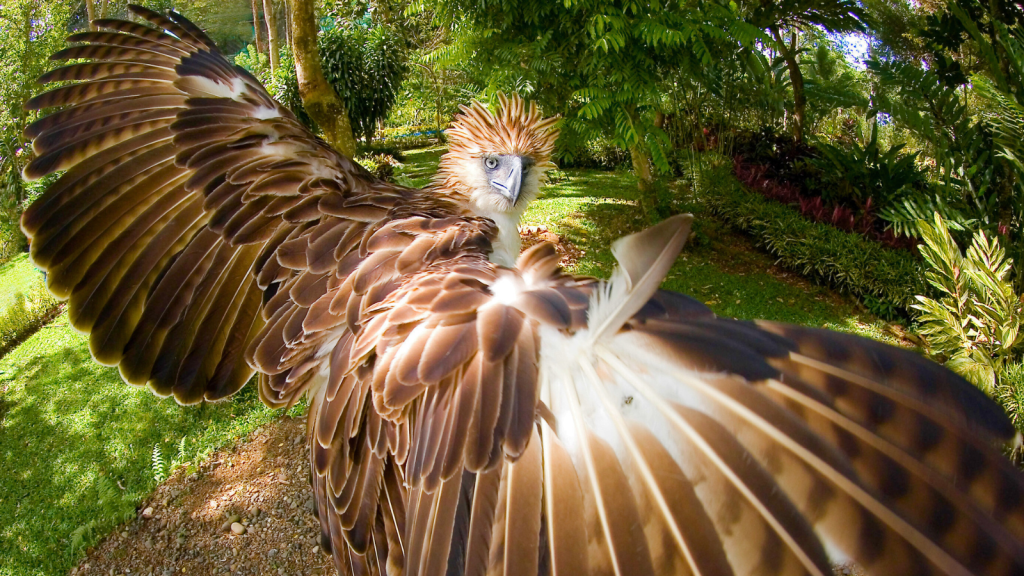The Philippine Eagle is a true marvel of nature, soaring above the lush rainforests of its island home. With fewer than 400 pairs left in the wild, this magnificent bird of prey teeters on the brink of extinction. Its rarity only adds to its allure, making it a creature of wonder and fascination for nature lovers worldwide. From its impressive size to its peculiar nesting habits, the Philippine Eagle boasts a range of characteristics that set it apart from other raptors. Let’s explore 13 unique traits that make this endangered species truly one-of-a-kind.
Enormous Wingspan
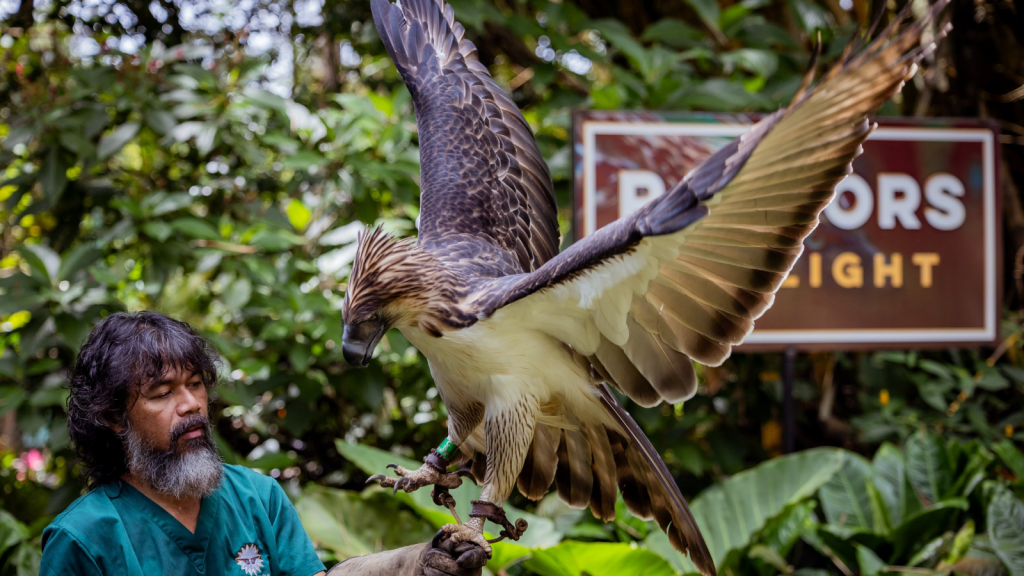
The Philippine Eagle boasts a wingspan that can stretch up to 2.2 metres, making it one of the largest eagles in the world. This impressive span allows the bird to glide effortlessly through the forest canopy, searching for prey. Its massive wings also help it navigate through dense vegetation with surprising agility for a bird of its size. Interestingly, despite its large wingspan, the Philippine Eagle weighs only 4.5 to 8 kilograms, a testament to its hollow bones and lightweight feathers.
Distinctive Shaggy Crest
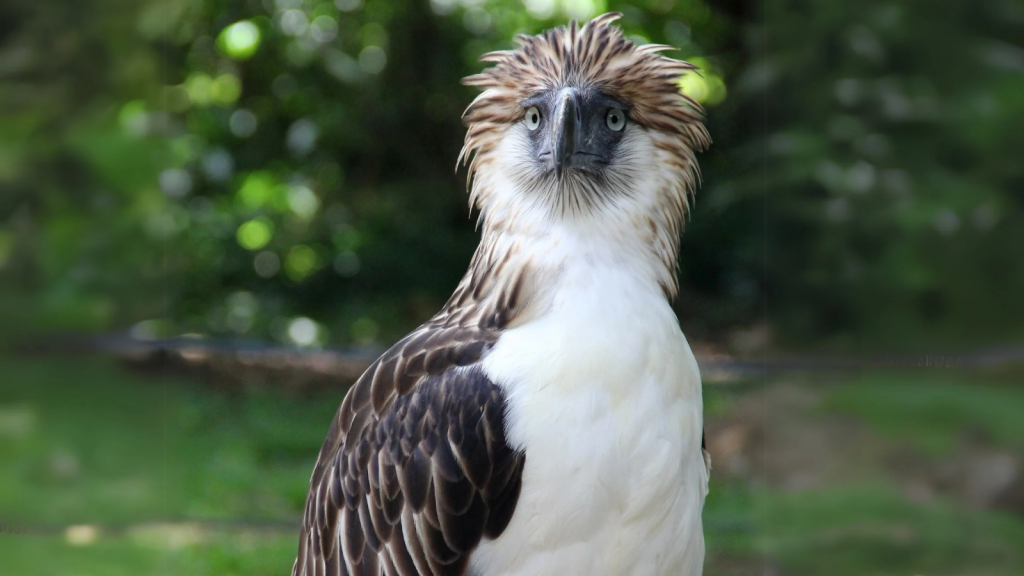
One of the most striking features of the Philippine Eagle is its long, shaggy crest of feathers atop its head. This crest gives the bird a regal appearance, almost like a crown. When the eagle is excited or alarmed, it can raise these feathers, creating an even more imposing silhouette. The crest also serves a practical purpose, helping to break up the bird’s outline and provide camouflage in the dappled light of the forest.
Powerful Talons
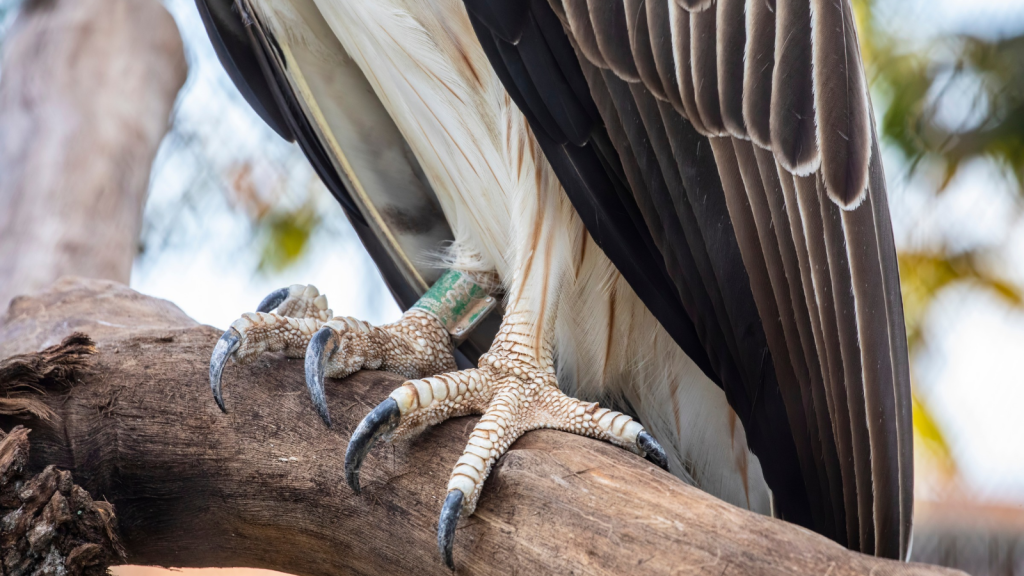
The Philippine Eagle’s talons are a force to be reckoned with. These sharp, curved claws can grow up to 4 inches long, larger than a grizzly bear’s. With these formidable weapons, the eagle can easily grasp and carry prey much larger than itself, including monkeys and small deer. The strength of these talons is so great that the eagle can exert a pressure of up to 500 pounds per square inch, more than enough to crush the bones of its prey.
Unique Hunting Strategy
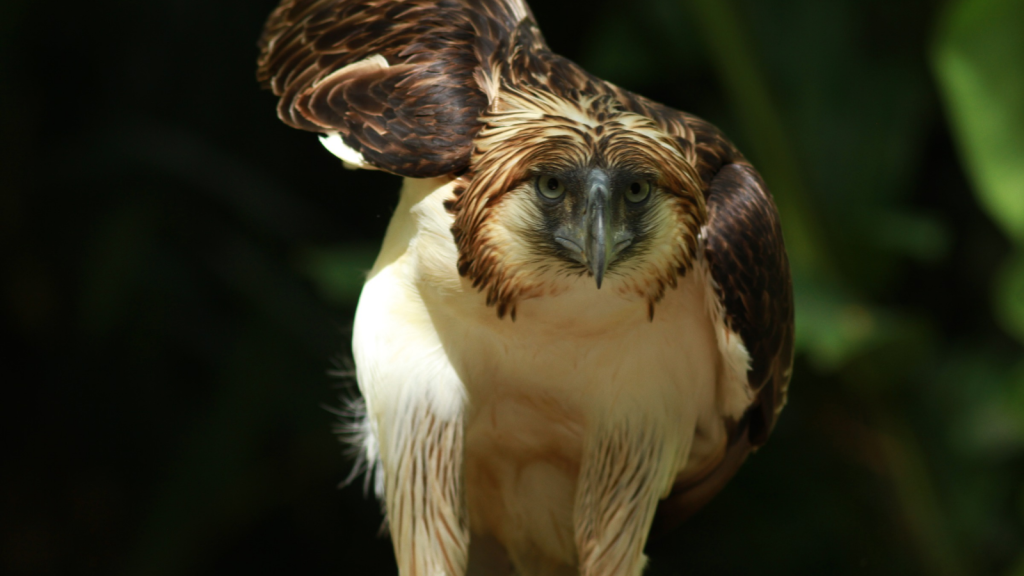
The Philippine Eagle employs a fascinating hunting technique called “sit-and-wait”. It perches silently on a branch for hours, patiently scanning the forest for movement. When prey is spotted, the eagle swoops down with incredible speed and precision, using its powerful talons to snatch its quarry. This strategy is particularly effective in the dense rainforest, where the eagle can remain hidden while surveying large areas for potential meals.
Monogamous Pair Bonding
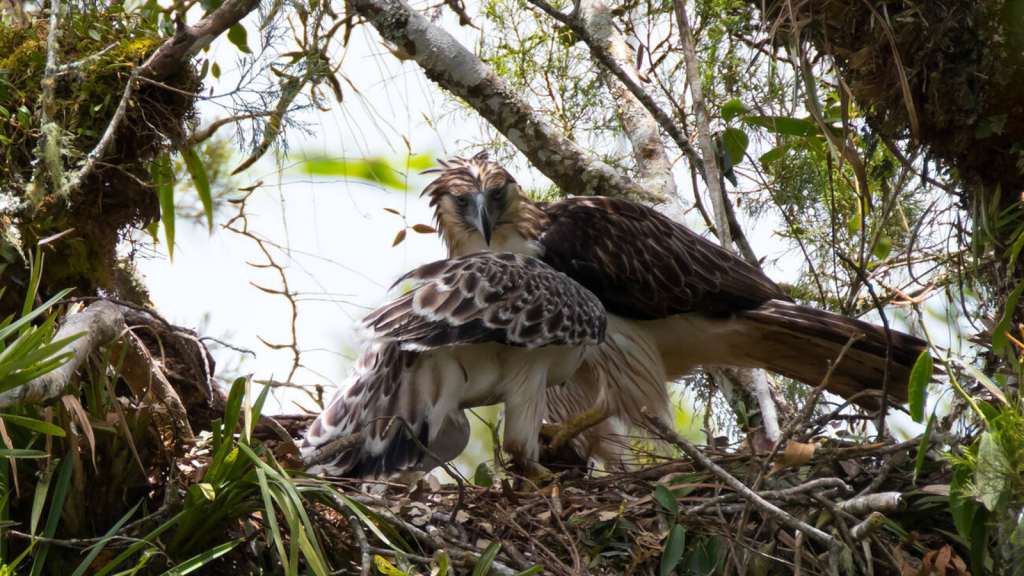
These majestic birds mate for life, forming strong, monogamous pairs. Once bonded, a pair will defend their territory together and share parenting duties. This commitment to a single partner is relatively rare in the bird world and highlights the complex social behaviour of the Philippine Eagle. Their courtship rituals are elaborate, involving aerial displays, vocalisations, and mutual preening, which strengthen their bond.
Slow Reproduction Rate

Philippine Eagles have one of the slowest reproduction rates among birds. A mated pair typically produces only one egg every two years. This slow breeding cycle makes the species particularly vulnerable to population decline and underscores the importance of conservation efforts. The long interval between breeding attempts is partly due to the extended period of parental care, which can last up to two years as the young eagle learns to hunt and survive independently.
Nest Building Expertise
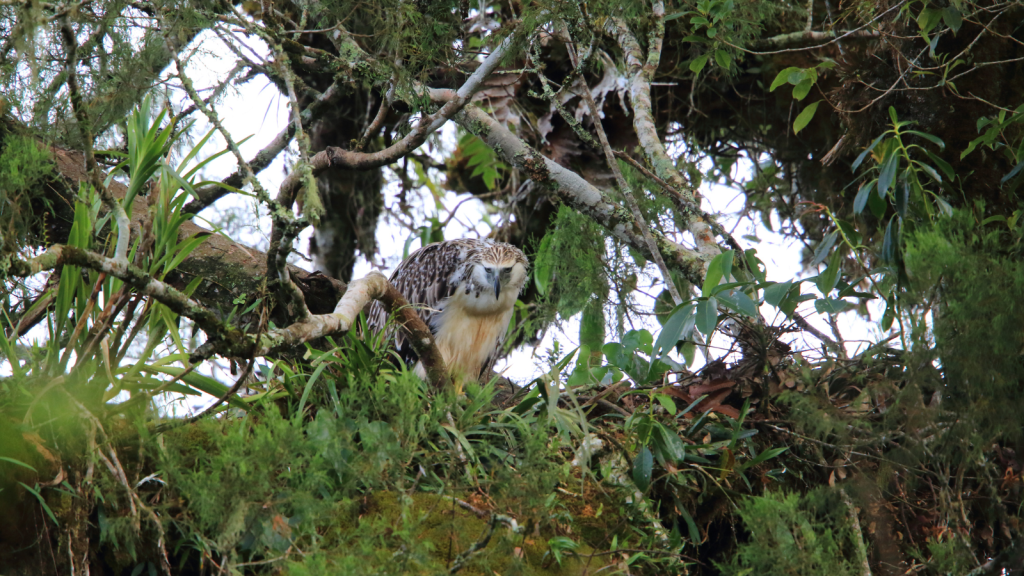
These eagles are master architects when it comes to nest building. They construct massive nests high up in old-growth trees, using a variety of materials including twigs, vines, and moss. These impressive structures can measure up to 1.5 metres across and are often reused and expanded over multiple breeding seasons. The eagles carefully select nesting sites, preferring tall, emergent trees with a good view of the surrounding forest, which aids in defending their territory and spotting potential threats.
Vocal Repertoire
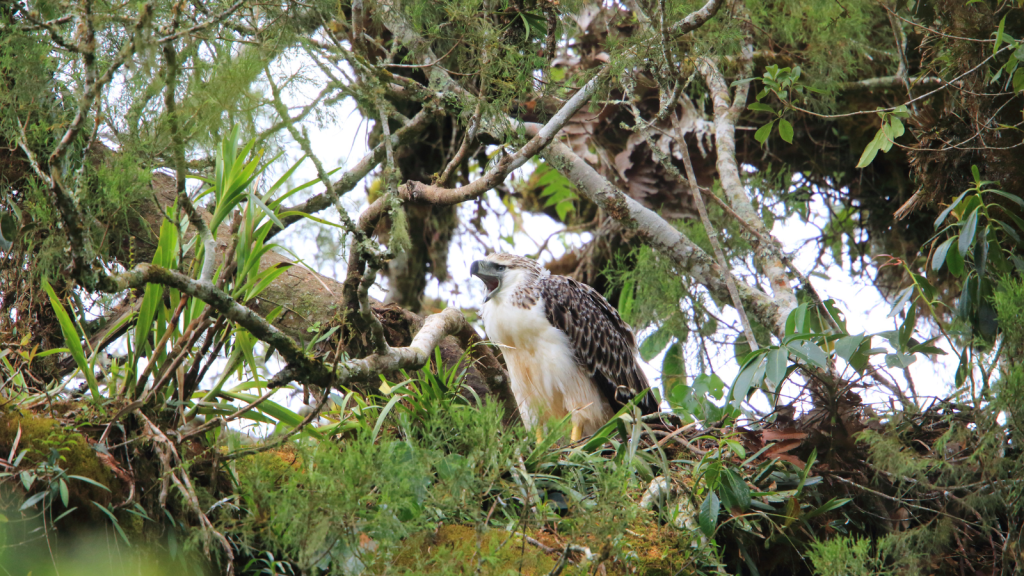
The Philippine Eagle has a range of vocalizations, from high-pitched whistles to loud, goose-like honks. These calls serve various purposes, from defending territory to communicating with their mate. During courtship, pairs engage in duets, creating a haunting symphony in the forest canopy. Researchers have identified at least seven distinct vocalisations, each with its own specific function in the eagle’s social and hunting behaviours.
Adaptable Diet

While primarily known for hunting mammals, the Philippine Eagle has a surprisingly varied diet. It will prey on flying lemurs, palm civets, and even pythons. This adaptability allows the eagle to survive in different forest habitats and helps it cope with changes in prey availability. In some areas, they have been observed hunting domestic animals like dogs and chickens, which unfortunately leads to conflict with local communities and highlights the need for conservation education.
Cultural Significance

In Philippine culture, the eagle holds a special place of reverence. It’s considered a national symbol and appears on the country’s currency. Many indigenous groups view the eagle as a spiritual guardian, believing it brings messages from the spirit world. The eagle’s importance is also reflected in local laws, with severe penalties for hunting or capturing these birds, although enforcement remains a challenge in remote areas.
Remarkable Lifespan
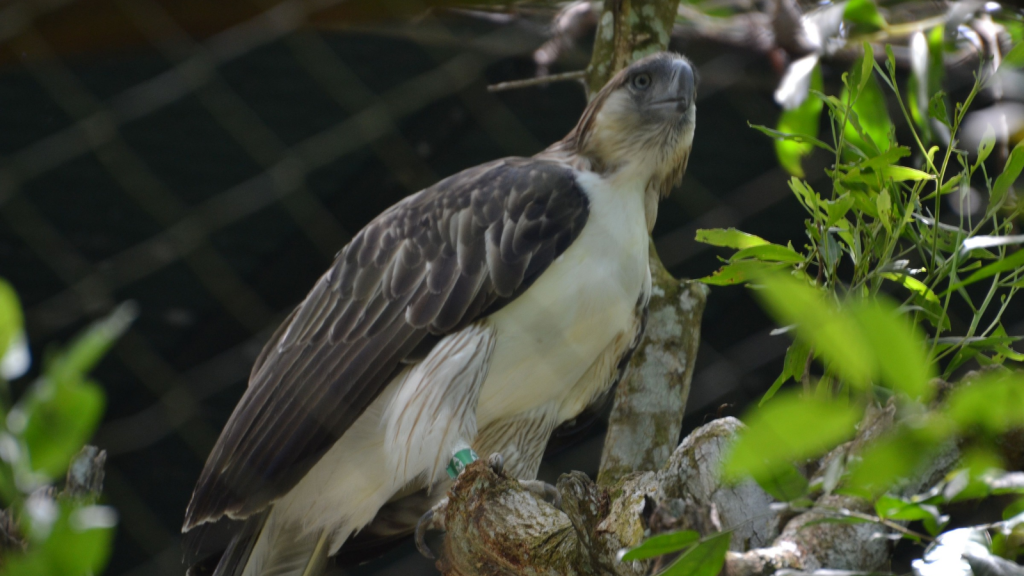
In captivity, Philippine Eagles have been known to live up to 40 years. This long lifespan is unusual for a bird of its size and speaks to the eagle’s resilience. However, in the wild, their life expectancy is often much shorter due to habitat loss and human persecution. The oldest known wild Philippine Eagle was estimated to be around 30 years old, based on its nesting history and physical characteristics.
Unique Facial Features
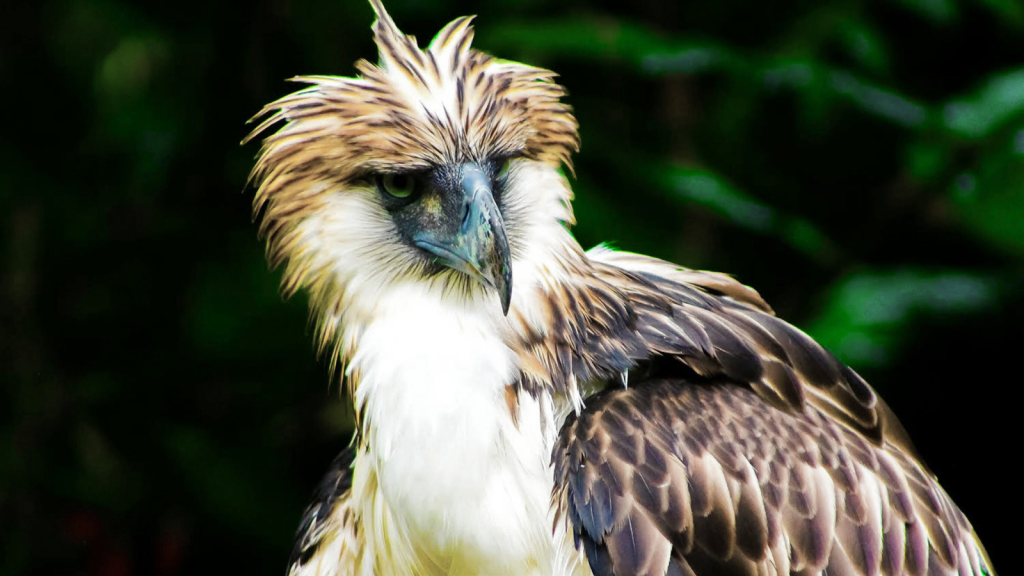
The Philippine Eagle’s face is a study in contrasts. Its dark mask-like feathers are offset by a pale face and throat, creating a striking appearance. This distinct facial pattern, combined with its pale yellow eyes, makes the Philippine Eagle one of the most recognizable raptors in the world. The contrasting colours may serve a social function, helping eagles to recognize each other and communicate subtle emotional states through slight changes in facial expressions.
Forest Guardians
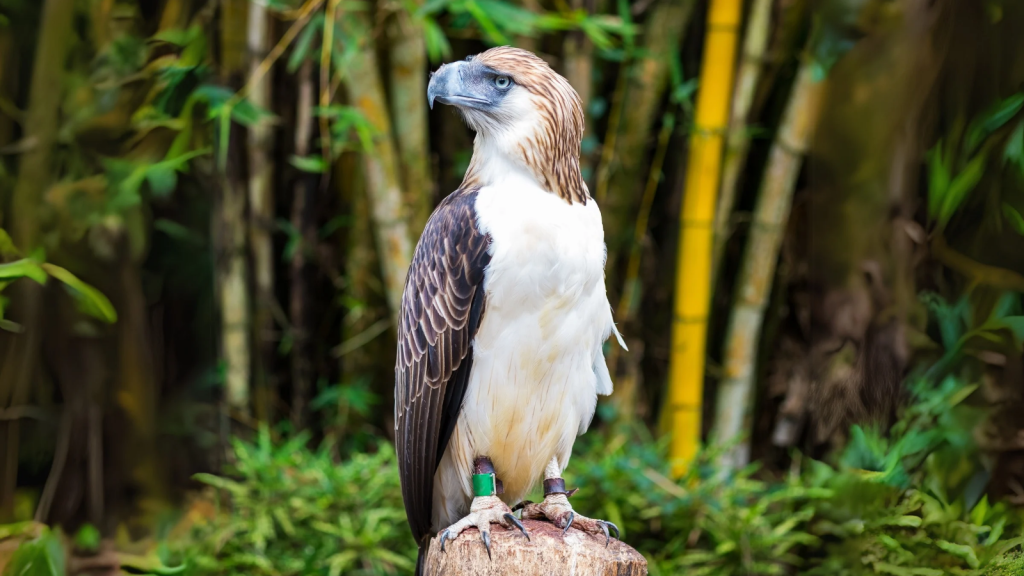
As apex predators, Philippine Eagles play a crucial role in maintaining the balance of their forest ecosystems. By controlling populations of smaller mammals, they help preserve the health and diversity of the rainforest. Their presence in an area is often considered an indicator of a healthy, thriving forest ecosystem. Conservation efforts focused on protecting the Philippine Eagle also benefit countless other species that share its habitat, making it a valuable “umbrella species” for broader biodiversity conservation.
Becky is a fervent wildlife enthusiast and pet care expert with a diploma in canine nutrition. Her love for animals stretches beyond the domestic, embracing the wild tapestry of global fauna. With over a decade of experience in animal welfare, Becky lends her expertise to OutlandishOwl through insightful articles, captivating wildlife information, and invaluable guidance on pet nutrition. Her work embodies a deep commitment to understanding the intricate lives of animals and a passion for educating others on sustaining natural habitats. Becky's hands-on conservation efforts and her knack for translating complex dietary science into practical pet feeding tips make her an indispensable voice for creatures great and small.

